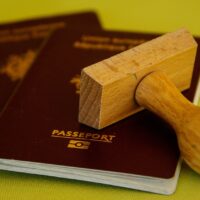Introduction
For foreign nationals working in Japan on a work visa, the “Dependent” visa (officially: Status of Residence “Family Stay”) allows them to bring their spouse and children to Japan. A common concern arises when the sponsor’s annual income falls below 2.5 million yen: “Is approval still possible?” This article explains practical measures to address income shortfalls, based on official immigration guidelines, to ensure accurate and reliable information.
Income Requirements for the Dependent Visa: Official Standards and Practical Benchmarks
The Dependent visa has no legally defined income threshold. However, immigration authorities rigorously assess “financial capacity to support family stability in Japan.” Practical benchmarks include:
- For couples: Approximately 2.3–2.5 million yen
- Per additional child: An increase of 300,000–600,000 yen
For example, a household with one spouse and one child typically requires 2.6–3.1 million yen. These figures account for regional living costs, with higher income expectations in urban areas like Tokyo.
Critically, approval hinges not solely on income but on demonstrating comprehensive household stability, allowing deficits to be offset through supplementary evidence.
4 Practical Measures to Compensate for Income Shortfalls
Even with income under 2.5 million yen, combining these strategies can improve approval chances:
1. Utilizing Savings Proof
Submit bank statements to verify sufficient funds for living expenses. Savings exceeding ¥1 million, for instance, may strengthen the application by showing financial resilience. Example:
“An annual income of ¥2.4 million can be offset by ¥2 million in savings to demonstrate stability.”
2. Involving a Financial Guarantor
Enlist relatives (e.g., parents) as guarantors who provide economic support. Required documents include:
- Guarantor’s income certificates
- A signed pledge detailing support terms
- Guarantor’s residence records
3. Reducing Housing Costs
Provide evidence of lower rent expenses, such as living with family or company-subsidized housing (e.g., lease agreements or employer housing confirmations). This demonstrates cost-effective living arrangements.
4. Presenting Future Income Plans
Submit a “reason statement” detailing near-term income growth (e.g., upcoming promotions) or a spouse’s part-time work plan (after obtaining work permission). Example:
“Current income is ¥2.4 million, but a raise to ¥2.8 million is expected within three months.”
Document consistency is vital: Misrepresentation risks rejection, so all claims must be verifiable.
3 Keys to Approval Success
Applications with below-benchmark income succeed more often when these elements are emphasized:
Proving Economic Stability
Submit tax receipts for 2–3 years to showcase income continuity. While permanent employees are favored, demonstrating job stability (e.g., long-term contracts) is essential regardless of employment type.
Comparing with Public Assistance Standards
Ensure income plans exceed local welfare thresholds. For example, Tokyo’s monthly welfare benchmark for couples is approximately ¥170,000. Matching or exceeding this (with savings) validates livability.
Demonstrating Holistic Living Security
Include:
- Health insurance documents (proof of social coverage)
- Evidence that rent is ≤30% of income
- Child education cost plans
This collective evidence highlights “quality of life” beyond income alone.
Conclusion: Flexibility Opens Pathways
The Dependent visa remains accessible even with income below 2.5 million yen. Approval depends less on “absolute income figures” and more on “proving a stable living environment.” By strategically employing savings proofs, guarantors, or future income plans, applicants can realistically achieve approval. Always prioritize transparent documentation and holistic financial narratives in your application.



